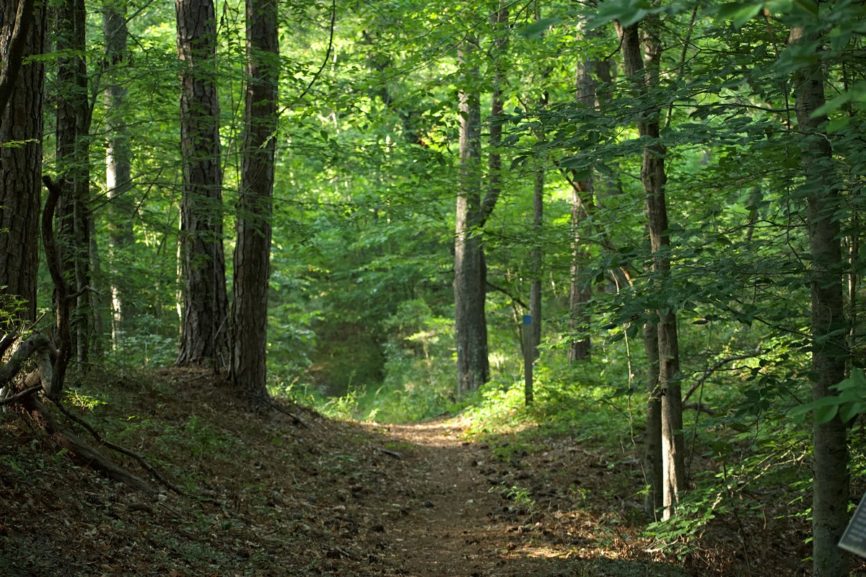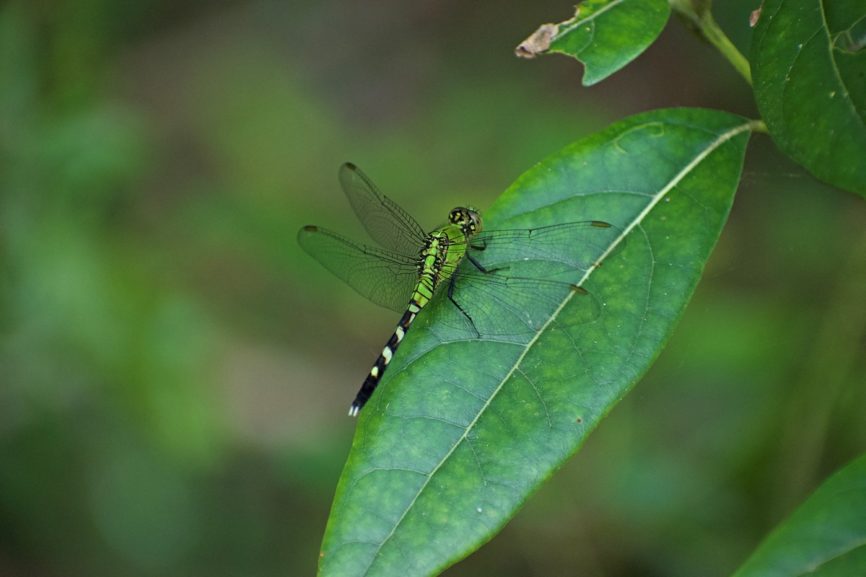Kitty Hawk Woods is a place of remarkable beauty and diversity. There are on the Outer Banks four protected maritime forests. Currituck Banks Estuarine Reserve is in Corolla; Nags Head Woods straddles Kill Devil Hills and Nags Head; Buxton Woods surround the Point in Buxton, and of course Kitty Hawk Woods.
Kitty Hawk Woods Reserve is unique, though. Unlike the other three sites, there’s not convenient parking or clearly marked trailheads so it sometimes gets overlooked. Yet this 1900 acre reserve calls out to be explored.
There are a number of ways to see what the Woods has to offer. Hop in a kayak and paddle along Jean Guite Creek. Experienced paddlers can certainly handle this on their own, but a number of outfitters take tours out on the creek.
The other way is to explore the trails that intersperse the Reserve either on foot or bike.
There are three trailheads, all in Kitty Hawk. One is at the end of Birch Lane on the east side of the Reserve. There is the Barlowe Trailhead at the intersection of Amadas Lane and Colleton Avenue. Those are dirt roads. And the Ridge Road Trailhead.

To keep it simple, we’ll go with the Ridge Road Trailhead. The Ridge Road Trail is a loop trail and it does connect with the Barlow Trail as well as a trail that leads to Albemarle Sound.
Ridge Road is off Tillett Street. Go to the end of Tillett and turn right at the Austin Cemetery. Go to the end of Ridge and that cleared dirt leading up to a wooden barrier with a playground on the left is the entrance to Kitty Hawk Woods.
The path is an easy walk. There may be some deadfall over the trail requiring a little bit of a scramble and for anyone on a bike a definite carry, but there are no real barriers to stop anyone.
After about a half-mile there’ll be an intersection with a bench in case you’re tired. The trail to the left leads to Albemarle Sound. It’s not a good trail for bikes. Continuing straight the path leads out to the Barlowe Trailhead and the dirt roads of Amadas Lane and Colleton Avenue.
There are a couple of ways that this trail can loop back around and the path itself is a pretty straight shot so there’s not much chance of getting lost. There are some hills and features that will give a bike rider a bit of a challenge, making it a fun trail to ride.
To the right a little bit of history becomes apparent.

Bike riders will notice right away that there is a sort of rhythmic thump, thump, thump. Hikers will certainly notice that the path is flat, compact and seems to be raised above the surrounding terrain.
At one time, from about 1910 to 1920 there was a logging operation in Kitty Hawk Woods by the Tunis Lumber Company of Elizabeth City. To move the felled trees to Albemarle Sound where they were rafted together for their journey to Elizabeth City mills, a train track was built and then loaded onto rail cars.
The trail is the remnants of that time.
In spite of the logging operations, or perhaps because they occurred 100 years ago, Kitty Hawk Woods exhibits many of the characteristics of a healthy maritime forest. The trails offer a fantastic window into that world.

The Albemarle Sound Trail parallels a deep swale that has become a swamp. In the summer, frogs are everywhere; dragonflies flit endlessly among the grasses at the water’s edge. Bald cypress, an evergreen that is water tolerant, towers above the trail.
As the trail climbs from the swale, the vegetation changes.
Hardwood trees dominate–American beech, loblolly pine, hickory, and some very large holly trees. It’s possible—probable really—that at one time there was live oak in the forest. However, historic records from the 1850s seem to indicate they were all harvested for shipbuilding.

There has never really been anyone living in Kitty Hawk Woods. It is beautiful but as a 1932 Coast and Geodetic Survey map team described the area it is “…impassable swamps and sand dunes.”
Yet as a place to explore that seems a world away from the beach, it is remarkable.
